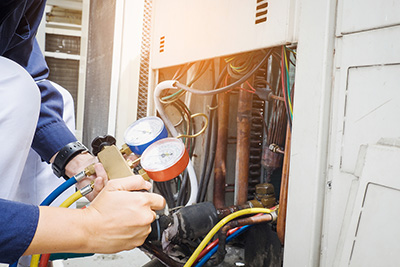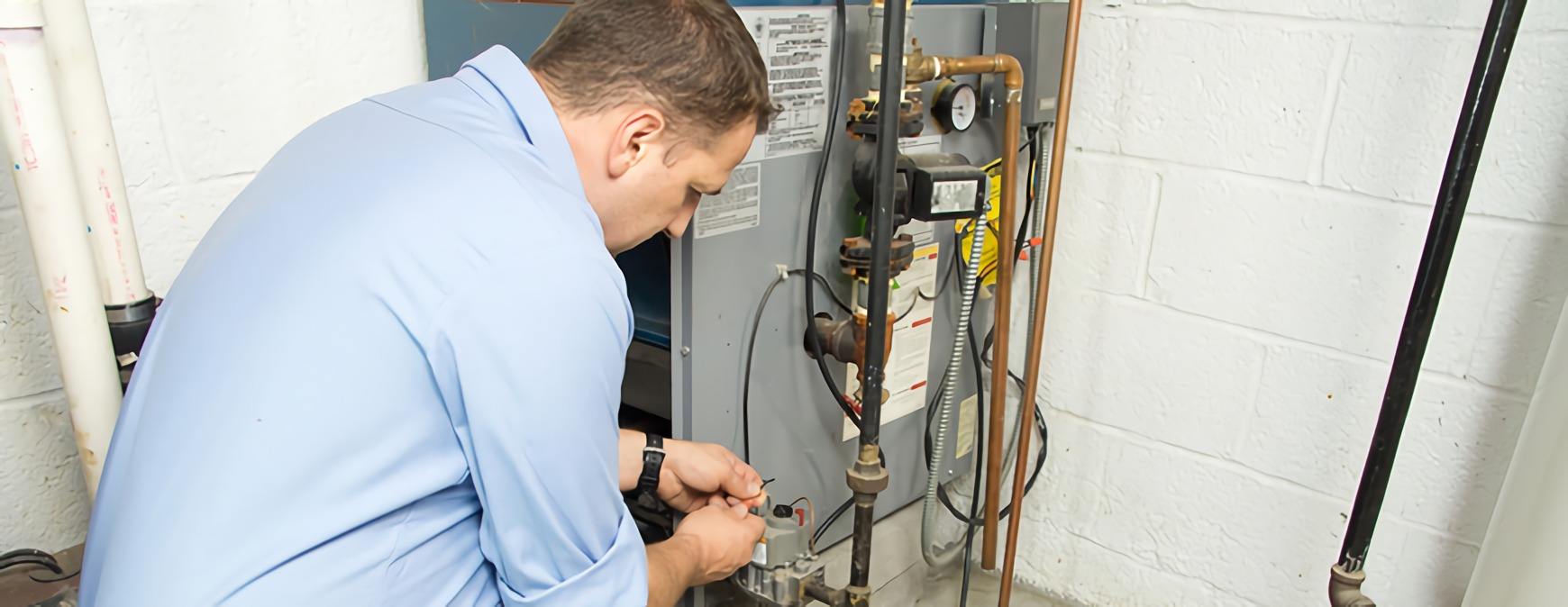RSI is a Great Training Option for Everyone
Learn more about how we can prepare you to advance your career.
HVAC professionals visit residential and commercial properties to perform maintenance on heating and cooling equipment. Since most property owners in the U.S. use furnaces, working on them often occurs in the fall and winter. 1
What Is a Furnace?
Before you start working on furnaces regularly, it might help to know how they work. A furnace uses gas, oil, or electricity to heat air. The warm air is circulated through ducts, pipes, or wires and then blown into the home through registers.
Is Furnace Maintenance Necessary?
Like your car any and HVAC unit, maintenance work is good practice. Routine furnace maintenance can help you catch small problems before they become big ones, saving customers money, and keeping them safe. 2
Furnace Maintenance Benefits:
- Prevent Breakdowns: Seasonal furnace checkups can ensure customers’ systems don’t breakdown unexpectedly on a freezing winter night requiring emergency service.
- Save Energy: Regular furnace maintenance can save homeowners as much as 10 percent on their yearly heating costs. 3 Just cleaning furnace filters can reduce utility bills by 5 to 15 percent per month. 4
- Catch Deadly Leaks: During a gas furnace inspection, you could identify carbon monoxide leaks before they become dangerous. Did you know that 400 Americans die every year from unintentional carbon monoxide poisoning? 5 As an HVAC technician, you could not only keep your customers comfortable but also safe.
Furnace Maintenance—How Often?

Like other heating systems, furnaces should be inspected and serviced once a year. Fall is the best time to perform a seasonal furnace checkup to find and fix problems before they become bigger. However, preventative maintenance can be performed any time of the year though.
Get Started on the Path to a New Career
Fill out our form to learn how we can help you change your life.
What Are Some Furnace Maintenance Tips?
- Inspect the combustion chamber for cracks.
- Check for leaks in the connections between the furnace and main ducts and seal them.
- Test for carbon monoxide leaks. If any are found, suggest remedies to the homeowner.
- Ensure flame characteristics and fuel inputs are correct. For example, the flame in a gas furnace burner should be light blue in the center with a darker blue outer area. Yellow flames indicate the presence of carbon monoxide.
- Clean or change air filters.
- Clean and lubricate blower motor.
- Adjust blower control and supply-air temperature.
- Get rid of any dirt, soot, or corrosion on the furnace.
- Inspect the heat exchanger for leaks.
- Set the air temperature controls for optimum efficiency and comfort. 6
Keeping Customers Comfortable and Healthy
Preventative furnace maintenance has many benefits for your customers. It keeps furnaces running properly and efficiently and potentially preventing dangerous situations like carbon monoxide leaks. Keeping your customers’ systems running smoothly can also save them from the cost of having to prematurely repair or replace components. What’s good for your customers is good for you, too, because well serviced customers are often loyal customers.
Additional Sources
1 – http://energy.gov/energysaver/furnaces-and-boilers
2 – Title: Fundamentals of HVAC; Authors: Carter Stanfield and David Skaves; Air-Conditioning, Heating, and Refrigeration Institute; Second Edition; Textbook page 1407
3 – http://www.hgtv.com/design/decorating/clean-and-organize/furnace-maintenance
4 – http://home.howstuffworks.com/home-improvement/household-hints-tips/cleaning-organizing/clean-furnace-filter.htm
5 – http://www.cdc.gov/co/faqs.htm
6 – http://energy.gov/energysaver/furnaces-and-boilers
This blog has been labeled as archived as it may no longer contain the most up-to-date data. For a list of all current blog posts, please visit our blog homepage at https://www.rsi.edu/blog/




